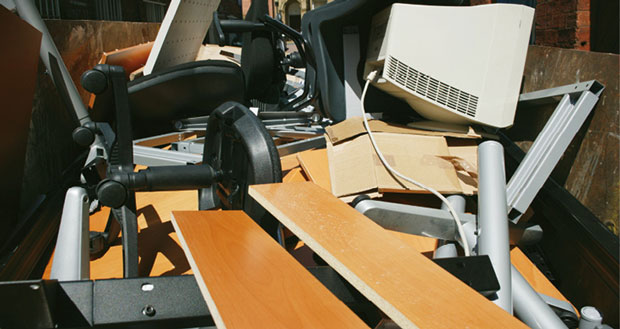From a resource efficiency perspective we all need to go beyond the three-step ‘Reduce, Reuse, Recycle’ maxim and embrace the 10 R’s explains Rachel Houghton, Managing Director at Business Moves Group
We’re all familiar with the maxim ‘Reduce, Reuse, Recycle’. However, as sustainability issues impel business leaders to confront their environmental impact, we all need to go beyond this three-step maxim. That means working towards a circular economy, which can be done through the 10 R’s.
They are:
1. Refuse
2. Rethink
3. Reduce
4. Reuse
5. Repair
6. Refurbish
7. Remanufacture
8. Repurpose
9. Recycle
10. Recover
This list provides guidance for cutting down on waste and can be used on a personal level, all the way up to large companies. The key is to go beyond thinking of sending waste to landfill as a last resort – it shouldn’t even be a consideration. Recycling should be the last resort but there is plenty that can be done before then to cut down on waste.
One area that offers a huge opportunity for businesses to cut waste is office furniture and equipment.
SUSTAINABLE FURNITURE MANAGEMENT
According to Mace’s Workplace Survey Report 2021, around three quarters of respondents intend to make upgrades to their workplaces in the next two years. From creating more welcoming, open environments which are conducive for group work to promoting physical and mental wellbeing, the way space is used is changing. On top of this, plenty of organisations may be looking to relocate.
It’s highly likely that most workplace change projects will involve furniture. So, those in charge need to address the 10 R’s and identify how they can lessen their environmental impact.
Top of the list is refuse and rethink. Do you really need that extra table, or those 10 new chairs? The best way to answer these questions is to conduct a furniture audit. Catalogue every item, note locations and condition, and include photographs.
Right off the bat you might realise that another one of your sites has perfectly good furniture that is not being used.
It may be that some furniture is a bit worn and not the right fit for a newly designed workplace. However, there are plenty of companies out there that can refurbish furniture so that it looks as good as new. This avoids buying new furniture and is often cheaper too, providing businesses with cost savings on the project.
Furthermore, existing furniture has already expended its embodied carbon – the emissions created in sourcing materials, making the item and transporting it. The average office chair has an estimated carbon footprint of 72 (kgCO2e) and a six-person bench desk 228 (kgCO2e). So, refurbishing and reusing is a great way to reduce carbon emissions.
If you don’t need to reuse certain items of furniture, there are plenty of businesses that will be happy buyers. We recently supported a major food brand with an office relocation in London. We sold enough excess furniture that the overall cost of the project was reduced by 50 per cent. On all of our work in 2021, we sold 10,000 items on behalf of clients.
An alternative to selling is donating. We partner with Business2Schools and donate unwanted office furniture to schools throughout the UK on behalf of our clients.
RECYCLE AND RECOVER
When an item has reached the end of its life cycle, we need to look at recycling. Even here it’s important to make a conscious decision by choosing a recycling firm that will recover all of the resources from an item and report back on where those resources have gone.
The average office chair contains metal, plastic, textiles, foam and fillings. Each of those materials will need to be broken down, sorted and sent on to its respective destination. Being able to report back on this to senior management will support CSR initiatives and is also important for customer communications. Customers are becoming increasingly discerning when choosing which companies to buy from – evidencing sustainability work is a powerful tool.
In 2021, we managed 1,251 tonnes of waste and diverted an average of 98.6 per cent from landfill. That means that in many projects we diverted 100 per cent, and in 2022 we’re aiming to get our average even higher.
A CHANGE OF MINDSET
Meaningful results will come from a change in mindset. Any workplace change project should be approached with the goal of sending nothing to landfill and only recycling when all other options have been exhausted.
Think beyond the 10 R’s when it comes to furniture. Try to avoid making rash decisions based on the ever-changing employee preferences towards the workplace. A table you might not have use for now might be needed in three months. Can you store it on site, or pay for warehouse storage for a short time?
The cost of storage will likely be less than having to buy new items and is again a more sustainable option. Of course, you don’t want to have items in storage indefinitely so set yourself a timescale for the project and that will help determine how long you might need storage for.
The circular economy is so critical to future sustainability, and any business that uses furniture has a part to play.





